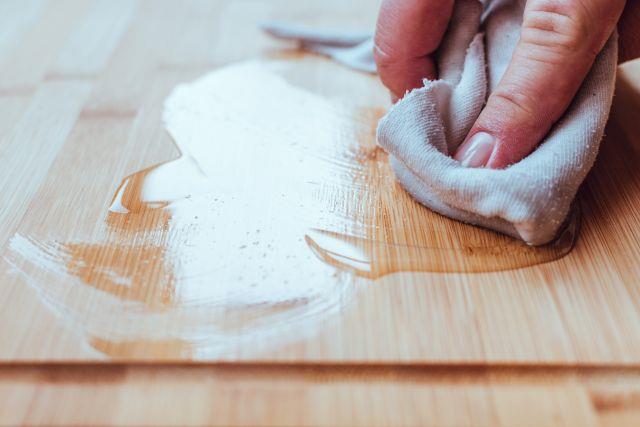NEWS
Effective Strategies for Removing Fuel and Oil Stains from Various Surfaces

Key Takeaways
- Discover why prompt action is essential in fuel and oil spill remediation.
- Learn about different methods for cleaning various surfaces affected by stains.
- Understand when to tackle a spill yourself and when to call in professionals.
- Explore eco-friendly options for stain removal that protect the environment.
- Prevent future incidents with proactive strategies and compliance with regulations.
Introduction
Dealing with the aftermath of fuel or oil spills can be distressing. Not only do these substances stain and degrade the appearance of surfaces, but they also pose potential risks to the environment. In many cases, a simple washdown cannot address the stubborn nature of these stains. Proper cleaning protocols are imperative to restore the surface and prevent harmful pollutants from causing further damage. In this comprehensive guide, we delve into the most pragmatic and productive strategies to tackle such spills head-on and restore the aesthetics and integrity of the impacted areas.
It is an intricate process that demands prompt attention, the right tools, and knowledge of cleaning agents. By combining immediate response with the appropriate cleaning techniques, even the most stubborn stains can be effectively managed without leaving a trace.
Understanding the Nature of Fuel and Oil Stains
Fuel and oil are made up of complex hydrocarbons that can easily seep into porous surfaces, making them one of the most challenging types of stains to remove. Proper management of spillage requires an efficient fuel spill clean up. When these liquids penetrate a surface, they cause discoloration that can become permanent if not addressed promptly. Moreover, unaddressed spills can have far-reaching environmental consequences. Fuel and oil can contaminate groundwater, harm wildlife, and disrupt natural habitats. Therefore, it is crucial to comprehend the chemical properties of these substances and implement best practices for effective cleanup to prevent such detrimental effects.
Pre-Cleaning Steps: Preparing the Stained Area
When you first notice a spill, acting quickly can significantly reduce the potential damage. Start by cordoning off the area to prevent the spread of the fluids and avoid any activities that may drive the stain deeper into the material. Use absorbent materials like sawdust, cat litter, or commercial absorbents to blot excess liquid. Once the majority of the fuel or oil has been absorbed, you can prepare for the deep cleaning process by gathering the necessary safety gear and selecting the appropriate cleaning agents that will be effective against the specific type of stain you’re facing.
Commonly Affected Surfaces and Specific Considerations
Cleaning up oil and fuel spills is not a one-size-fits-all process. Different surfaces have unique characteristics that influence the cleaning method. For example, asphalt and concrete are porous and may require specialized cleaners to penetrate deeply to lift the stain. Sealed surfaces like metal or certain types of tile may allow for easier cleanup but still need specific methods to avoid damage. Similarly, indoor stains, often found on garage floors or in industrial settings, must be managed with proper ventilation and safety considerations. A thorough understanding of the material you’re working with will inform your approach to stain removal and ensure the best possible outcomes.
Professional Remediation for Larger or Stubborn Stains
Larger spills or older, set-in stains often defy simple home remedies and require a professional touch. Cleaning companies specializing in the remediation of fuel and oil stains possess industrial-grade solvents, pressure-washing equipment, and protective gear to safely and effectively address substantial cleanup jobs. By engaging these services, you guarantee the complete eradication of unsightly stains and ensure that all procedures comply with environmental regulations, minimizing any detrimental impacts on the natural surroundings.
Eco-Friendly Removal Options
The emphasis on sustainability has grown in recent years, prompting the development of numerous green products and techniques designed to handle spills without compounding their environmental toll. Microbial cleaners are another excellent example; they degrade hydrocarbons into harmless substances, harnessing natural processes for environmental safety and cleanliness.
Preventive Measures to Avoid Future Stains
The adage “an ounce of prevention is worth a pound of cure” rings true in the context of fuel and oil stain prevention. Simple, proactive strategies such as conducting regular vehicle and machinery maintenance checks, using drip pans, and adequately storing chemicals can substantially reduce the likelihood of spills. Additionally, installing absorbent mats under vehicles or machinery and sealing porous surfaces can create an added layer of protection, making any future spills much easier to handle.
Regulations and Guidelines for Handling Fuel and Oil Spills
The management and cleanup of fuel and oil spills are subject to various regulations designed to protect public health and the environment. These guidelines, including those put forth by organizations such as OSHA’s Oil Spill Preparedness, outline best practices and mandatory procedures for handling hazardous materials. Staying informed about these regulations and incorporating their recommendations into spill response plans is vital for any individual or business handling these potentially dangerous substances.
In conclusion, while tackling fuel and oil stains may seem daunting, informed and calculated action can yield impressive results. Whether addressing a trim, fresh paint, or managing a significant spill, understanding the nature of the stain, the affected surface, and the range of available cleaning methods can make all the difference. Remember to always factor in environmental considerations, aim for prevention, and stay abreast of safety regulations to manage and remediate these challenging but manageable situations.
Harper Harrison is a reporter for The Hear UP. Harper got an internship at the NPR and worked as a reporter and producer. harper has also worked as a reporter for the Medium. Harper covers health and science for The Hear UP.










